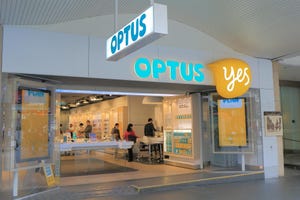Bridging the Digital Divide: Part 2
In the second installment of this four-part sponsored series, we look at some more key highlights from a new Heavy Reading study about the broadband industry's plans for closing the Digital Divide.

How do telcos, cable operators, fiber providers, wireless operators, utilities, municipalities and other broadband players aim to close the Digital Divide? What kinds of networks are operators and vendors looking to build, adapt and/or expand? How much are they planning to leverage public subsidies? What are the biggest challenges they face in wiring unserved regions, and how can they meet these challenges?
Seeking to address these and other related issues, Heavy Reading teamed up with four leading tech suppliers — Corning, DZS, Radisys and Vantiva — to conduct a comprehensive study about ways to bridge the Digital Divide. In this series of four sponsored blog posts, we present key study highlights, analyze the findings and discuss the implications. We also draw some conclusions about what the findings mean for the overall drive to close the Digital Divide around the world.
The role of government funding programs
Zeroing in on the public funding angle, the Heavy Reading study asked operators from every continent about the importance of tapping into middle-mile subsidies to close the Digital Divide. Providers were asked to rate them on a scale of "critical" down to "not important." Overwhelmingly, survey respondents hailed the importance of middle-mile subsidies. More than one-half of participants (53%) rated the subsidies as "important," while another 20% ranked them even higher as "critical." Only 7% dismissed the subsidies as "not important."
Clearly, then, the role of government funding programs in closing the Digital Divide stands out. Without such programs in place, the market incentives do not seem compelling enough to drive the necessary investment in new broadband infrastructure, as shown in the figure below.
Figure 1:  (Source: Heavy Reading)
(Source: Heavy Reading)
Most important criteria for picking CPE suppliers
How do operators go about choosing an equipment supplier for closing the Digital Divide? That's what the next question sought to find out. Survey participants were asked to choose their most important criteria for picking a CPE supplier and were allowed to select two choices.
With multiple answers permitted, slightly more than one-half of operators (52%) selected a vendor that can offer an end-to-end solution, making that the lead choice. Lowest cost came in a strong second, attracting votes from 45% of the sample. No other choice came close to those two, as can be gleaned from the figure below.
These findings suggest that operators would ideally like to work with one uber vendor that can supply the whole ecosystem in terms of devices: optical line terminal (OLT), optical network terminal (ONT) and gateway/extender. Thus, it should be good news for larger vendors offering comprehensive solutions that address the full ecosystem, not just separate individual elements. But it is also good news for vendors with lower priced equipment.
Figure 2:  (Source: Heavy Reading)
(Source: Heavy Reading)
Where help is needed most for last-mile broadband projects
Where do service providers need help the most from equipment and software vendors for their broadband buildouts? The next survey question sought to discern the specific areas that operators have identified for help, permitting respondents to make up to three selections.
Reducing capital costs topped the list here, garnering votes from nearly one-half of survey participants (48%). Close behind was reducing network operating expenses, which drew votes from 46% of respondents. Lumping the two lead choices together, it is clear that operators are seeking the most assistance from equipment and software vendors in cutting costs, as can be seen in the figure below.
Other areas also scored fairly high. Both reducing network deployment time and reducing network deployment labor costs requirements attracted votes from about one-third of respondents, reaching 34% and 33%, respectively.
Figure 3:  (Source: Heavy Reading)
(Source: Heavy Reading)
That wraps up more key results from the Digital Divide study, and some common threads are highlighted here. First, the middle mile has emerged as a major factor in bridging the Digital Divide. Second, service providers are looking beyond price to end-to-end solutions in the CPE space. Third, providers view high capital costs as a major issue in closing the Digital Divide, but they also have strong concerns about high opex.
For a free copy of Bridging the Digital Divide, the Heavy Reading white paper detailing all the study results, please click here.
This blog is sponsored by DZS.
About the Author(s)
You May Also Like












